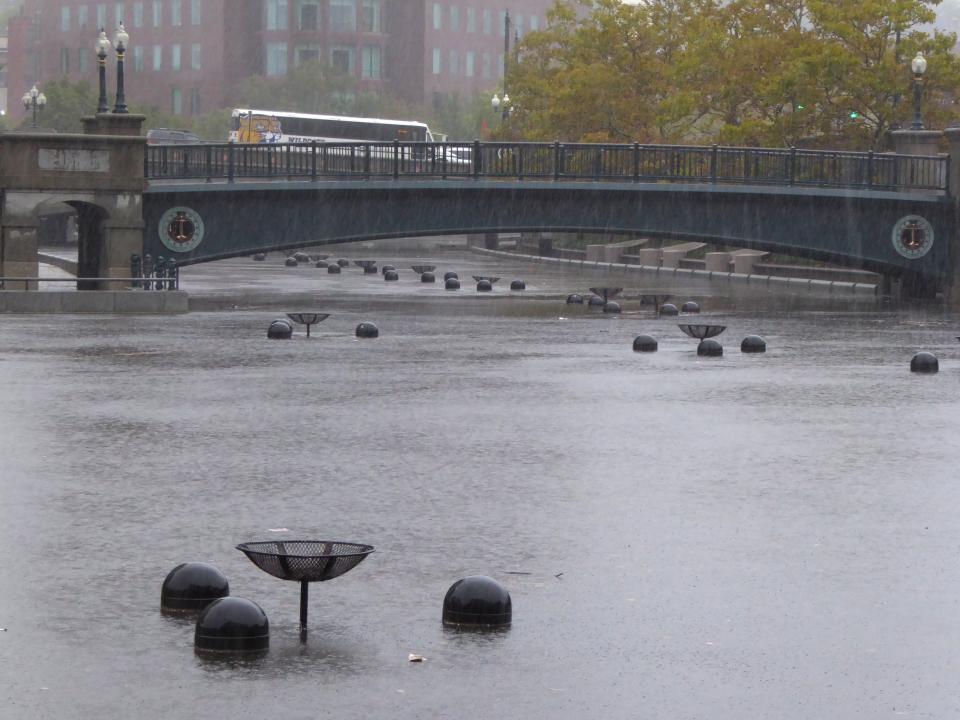Opinion: Climate crisis is affecting RI. But coastal resilience projects will help bring relief
Sen. Alana DiMario, D-District 36, represents Narragansett, North Kingstown, and New Shoreham. Rep. David Morales, D-District 7, represents the Mt. Pleasant, Valley, and Elmhurst neighborhoods of Providence.
As Rhode Island’s tides continue to rise, so do the stakes. The climate crisis is affecting the state at an alarming rate as our shorelines creep inland by nearly two feet per year, significantly higher than the global average.
The good news is, some relief is on the way for the Ocean State. Last year, our coastal communities received a much-needed boost thanks to the passage of the Inflation Reduction Act, which opened the door to historic funding for coastal resilience projects that will help our state weather some of the worst climate impacts.
As new investments come, it’s crucial that the most at-risk communities are first-in-line to receive funds to shore up their shorelines.
More: Warren official tells U.S. Senate panel climate change threatens character of small towns
This new funding couldn’t come at a better time. We are seeing increased flooding, larger waves, and more severe, frequent nor'easters — all of which are chipping away at our coasts. Homes have collapsed into the sea and important infrastructure like the roads we rely on every day have become more susceptible to flooding.
Thousands of Rhode Islanders are vulnerable to these climate impacts — however, some are more at-risk than others. Disadvantaged neighborhoods and communities of color are too often climate disasters’ first victims and the last to be considered when disaster hits.
Research has found that flooding interrupts access to food banks, schools or child care facilities, and health services, especially for low-income residents, many of whom avoid calling for help for fear of repercussions from authorities unrelated to flooding. We’re seeing this disparity in real-time in Providence, specifically the South Side and Fox Point neighborhoods.
More: As storms track further inland, they'll cause more wind damage in RI. Here's where.
Communities like South Side and Fox Point are also more likely to be in floodplains and stand to benefit most from coastal resilience projects. These investments bolster “green infrastructure,” using natural barriers such as salt marshes, oyster beds, and seagrass meadows to safeguard communities against flooding, in addition to capturing excess carbon and restoring our state’s natural beauty.

Projects like these are underway in Rhode Island. A recently greenlit project along the Woonasquatucket River will help to reduce impacts of flooding, extreme heat, and erosion and improve water and habitat quality with green infrastructure. And the project prioritizes community engagement — the Woonasquatucket River Watershed Council will engage frontline residents through its Nuevas Voces Program and Providence's Racial and Environmental Justice Committee's Green Justice Zones Program. Meanwhile, Portsmouth and Charlestown have launched projects that will reduce flooding and create better access to the shoreline by restoring wetlands and growing native plants that prevent erosion.
These projects are also smart economic investments. The National Oceanic and Atmospheric Administration found that the money that went toward these projects generated nearly double the total economic benefits in returns and supported over 2,200 jobs along the coasts to build and maintain them. That doesn’t account for the indirect boosts for local restaurants, fisheries, and tourism businesses that rely on healthy coastlines to thrive.
And, there are more tools at our disposal. STORMTOOLS, a program run by the Rhode Island Coastal Resources Management Council, allows us to determine which communities are more vulnerable to flooding and storm damage, as well as which regions to prioritize for new coastal resilience projects. Regions highlighted by STORMTOOLS include South Providence, Fox Point, East Providence, North Kingstown, Narragansett, and New Shoreham, among others.
More projects like these will be a major game changer for Rhode Island communities. With each day that climate change looms over Rhode Islanders, more and more is at risk. Our state needs coastal protection now, and equitable climate resilience projects are the first step.
This article originally appeared on The Providence Journal: Coastal resilience projects will make big waves in RI’s fight against climate change | Opinion Column

